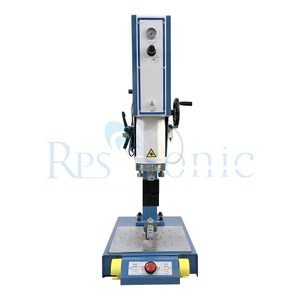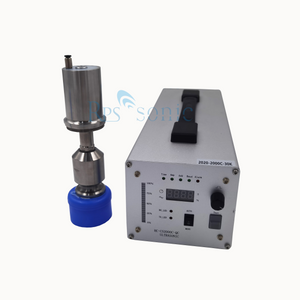Advantages of Ultrasonic Welding of Car Door Panels
Automotive door panels are complex components, typically composed of various materials (such as ABS, PP, PET, and other plastics) and multiple parts (panels, frames, map pockets, armrests, trim strips, etc.). Ultrasonic welding, as a highly efficient joining process, offers significant advantages in this field.
Why is it particularly suitable for automotive door panels?
Automotive door panels are usually made of thermoplastics such as ABS, PP, and PET, which are ideal materials for ultrasonic welding. These materials possess excellent vibration transmission and thermoplasticity. Through a carefully designed welding head and welding line (Energy Director, a triangular protrusion structure that guides concentrated energy), the melting and joining areas can be precisely controlled, achieving high-strength, aesthetically pleasing connections in the unseen interior, perfectly meeting the extreme requirements of automotive components for strength, appearance, efficiency, and reliability.
Simply put, ultrasonic welding is like a "silent," high-speed, precision "stitching" technique for plastic parts, firmly binding them together as a whole through internal molecular fusion.
The principle of ultrasonic welding is essentially a joining technology that uses high-frequency mechanical vibration to generate internal frictional heat, causing localized melting of thermoplastic plastics and achieving intermolecular fusion. This process is extremely rapid and precise.
Core Components:
* **Ultrasonic Generator:** Converts standard 50/60Hz power frequency current into high-frequency electrical energy of 20kHz, 30kHz, or 40kHz.
* **Transducer:** Also known as a "sound head" or "vibrator," its core is a piezoelectric ceramic plate. It converts the high-frequency electrical energy from the generator into high-frequency mechanical vibrations (i.e., ultrasonic waves).
* **Amplifier:** Connected to the transducer, its function is to amplify the amplitude of the vibrations generated by the transducer to achieve the amplitude required for welding.
* **Welding Head:** This is the component that directly contacts the product. It directionally and efficiently transmits the mechanical vibration energy from the amplifier to a specific area of the workpiece to be welded. The welding head needs to be precisely designed according to the shape of the product.
* **Base Mold:** Used to support and fix the workpiece, ensuring that the product does not shift under welding pressure and providing a reaction force for the welding head.
Here is a detailed breakdown of its core advantages:
1. High Efficiency and Energy Saving, High Production Efficiency
* Fast Welding Speed: A complete welding cycle typically takes between 0.5 and 1.5 seconds, far faster than adhesive bonding (which requires curing time) or mechanical fastening (tightening screws one by one).
* Instant Molding: Welded parts do not require cooling and setting; they can be immediately processed for the next step or packaged after welding, greatly shortening the production cycle and making it suitable for large-scale assembly line operations in the automotive industry.
* Extremely Low Energy Consumption: Ultrasonic welding utilizes high-frequency vibration friction to generate heat, concentrating energy only in the welding area. Power consumption is only a fraction of that of traditional welding or heating processes.
2. High Connection Strength and Stable Product Quality
* Molecular-Level Fusion: Ultrasonic welding causes the molecules on the plastic contact surface to move violently and diffuse into each other under pressure, forming a fusion between molecular chains. This creates a uniform weld zone with strength very close to that of the base material, far exceeding the strength of ordinary adhesive bonding.
* Excellent Sealing: The resulting weld seam can achieve an airtight or watertight seal, which is crucial for dustproof and waterproof parts on door panels (such as map pockets and speaker grille covers).
3. **No Stress Concentration:** Compared to screw connections, it avoids stress concentration issues caused by drilling, resulting in better product structural integrity.
4. **Aesthetically Pleasing and Clean, No Additional Treatment Required:** The welding process is completed internally, and the exterior of the product typically shows no weld spots, screw holes, or glue residue, ensuring a smooth, clean, and premium look for the door panel.
5. **No Impurity Introduction:** The entire process requires no additional materials such as adhesives, solvents, fasteners, or consumables (e.g., welding rods), avoiding problems caused by glue aging, overflow, or chemical residues (e.g., whitening, odor).
6. **High Degree of Automation and Process Control:** Easy Integration: Ultrasonic welding equipment is ideally suited for integration into automated production lines and robotic arms, enabling unmanned operation and ensuring production consistency and reliability.
7. **Precise and Controllable:** Modern ultrasonic welding machines can be controlled in multiple modes, including energy, time, distance, and power, and can monitor the parameters of each weld in real time (e.g., final distance, energy, peak power), ensuring the quality of each product. Defective products are automatically identified and rejected by the system, meeting the stringent quality traceability requirements of the automotive industry. 5. Environmental Protection and Cost-Effectiveness
Environmentally Friendly: No toxic fumes or chemical solvents are emitted (except for some plastics, which require ventilation), creating a better working environment for workers and complying with increasingly stringent environmental regulations.
Low Overall Cost:
Material Costs: Eliminates the cost of auxiliary materials such as glue, screws, and washers.
Management Costs: Eliminates the procurement, warehousing, and management processes for auxiliary materials.
Labor Costs: High degree of automation reduces manual operation.
Post-Production Maintenance Costs: Connection points do not age like glue, nor do they loosen and produce abnormal noises like screws, resulting in higher reliability throughout the product's lifespan.
Summary of Comparison with Traditional Processes:
Characteristics: Ultrasonic Welding, Adhesive Bonding, Mechanical Fastening (Screws/Snap-ons)
Speed: Extremely Fast (<1 second), Slow (Requires Curing Time), Medium
Strength: High (Base Material Fusion), Medium (Depends on Adhesive), High, but with Stress Concentration
Appearance: Perfect and Seamless, May Have Adhesive Overflow, Whitening, Screw Holes/Snap-on Heads
Sealing: Excellent (Airtight/Watertight), Good, Generally Poor
Automation: Very Easy, Relatively Complex (Requires Precise Dispensing), Can Be Automated
Environmental Protection: Good, May Have VOC Emissions, Good
Overall Cost: Low (Long-Term), Medium (Adhesive Cost), Medium (Parts and Assembly Cost)
Specific Application Examples in Automotive Door Panels:
Map Pocket (Storage Compartment): Seamlessly welds the pocket to the inside of the door panel.
Armrest Base: A robust connection to the door panel frame.
Decorative Strip/Panel: Secures the surface trim to the underlying substrate without any surface damage.
Speaker Grille: Welds in place, ensuring unobstructed mesh openings.
Door panel frame and skin: In some designs, this is used to weld the plastic skin to the frame structure.
In summary, ultrasonic welding technology provides an efficient, robust, aesthetically pleasing, environmentally friendly, and easily quality-controlled solution for automotive door panel manufacturing. It perfectly meets the high demands of the modern automotive industry for production efficiency, product quality, and lightweight design, and has become one of the indispensable key processes in this field.


 English
English












